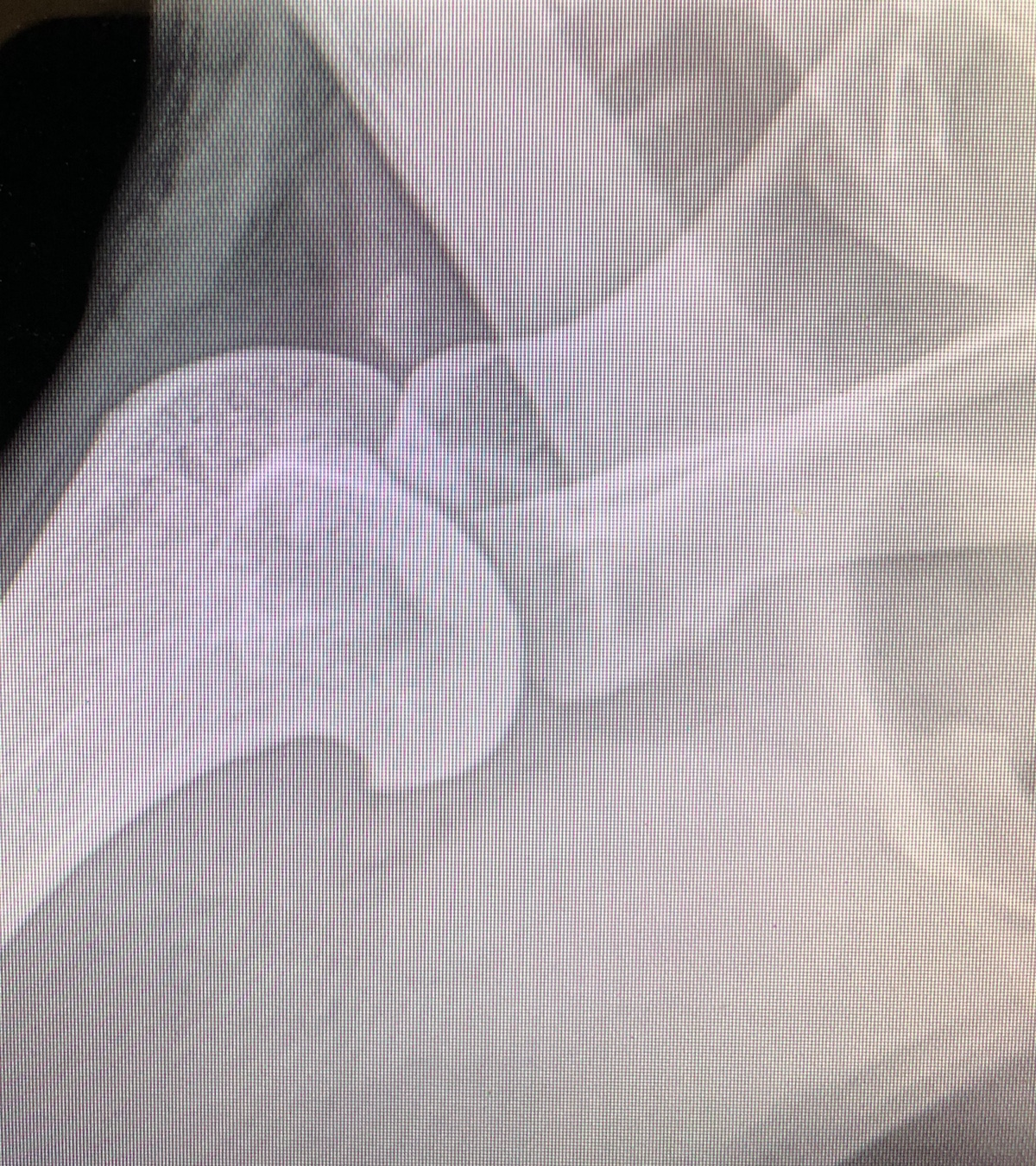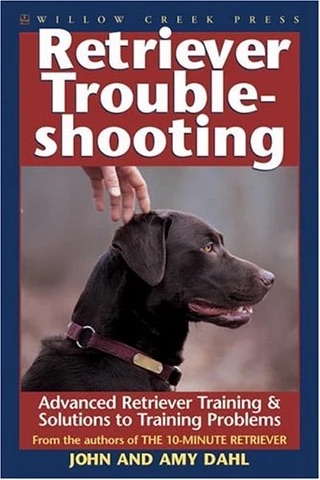My sinewy orange-belton setter raced across the prairie searching for that pungent fragrance of sage and sage-chickens. Her massive pelvic limb muscles quivered and bulged as the shadows lengthened and the orange hues slowly faded to gray. As she rounded the corner on the last section, I notice a very subtle change in her gait.
“Danged prickly-pear” was my initial reaction. While doing my tailgate inspection before returning her to the dog box, I lifted her left paw for closer inspection. I didn’t find even one of those pesky prickly-pear spines. Is it possible that my 3 1/2-year-old, well-conditioned, raw-boned, coverdog was developing osteoarthritis?

Twenty percent of all dogs over the age of one have minor degeneration of their joints.
Recent accounts in literature suggest that approximately twenty percent of all dogs over the age of one already have minor degeneration of their joints.
Twenty percent of all dogs over the age of one!
This makes osteoarthritis a significant sporting dog disorder. Osteoarthritis (OA) is a young disease. It develops in our young sporting dogs but is manifested in our middle-aged adult dogs.
Having a general knowledge of canine joint anatomy and the pathophysiology of osteoarthritis can be a benefit in the prevention and treatment of the disease in our bird dogs.
Osteoarthritis (OA) is a slow progressive, wear-and-tear joint disease associated with the freely movable (synovial) joints within the canine body. OA is associated with a low-grade, chronic, inflammatory process within these movable joints that is coupled with the long-term stresses of running and the effects of aging. Another way to envision canine OA is when the destruction of the joints structures (such as cartilage and connective soft tissue) exceeds the production, creating varying degrees of pain and discomfort to our bird dogs.

Bird dog with shoulder arthritis.
The canine skeletal system consists of numerous, separate, long bones that are fastened together by connective tissue creating an articulation or joint. A synovial joint is a freely movable joint that has a space between the two articulating bones. The synovial joint is comprised of a fibrous capsule surrounding the joint and a very thin layer called the synovial membrane. The synovial membrane is very important in the load-bearing capacity of the joint because it produces the viscous fluid found in the joint that helps with the frictionless motion of the joint. Joint fluid or synovial fluid provides nutrients for the articular cartilage that covers the ends of the bones. Finally, the tendons, ligaments and muscles help provide flexibility and support to the synovial joint.
Athletic stresses or repetitive trauma to the joint can lead to injury of the cartilage cells releasing mediators (chemical enzymes that lead to destruction of the joint) of inflammation. These mediators cause damage directly to the joint by decreasing the viscosity of the joint fluid and causing death to the cartilage cells that protect the ends of the bones. Over time, inflammation results in the thickening of the fibrous joint capsule, formation of bone spurs, decreased joint flexibility and painful swelling. The degree of discomfort caused by OA to our athletic dogs can be mild to performance stopping.
Now that you have a good understanding of canine OA, I’d like to suggest five products to protect and aid the joint for remodeling and reduce inflammation that are over the counter. These products are available without a visit with your family veterinarian and you do not need a prescription.
Cosequin DS (with the golden retriever drawing on the bottle)
The only over the counter glucosamine/chondroitin product that was formulated to truly support and protect the joints. It is also the only FDA-approved glucosamine for use in dogs (meaning they studied it and proved that it works in dogs). Glucosamine and chondroitin (along with hyaluronic acid) are glycosaminoglycans which help lubricate and build components of the joint. I start my bird dogs on Cosequin DS at 6 months of age (remember OA is a young dog disease).
Fish oils (Omega-3 Fatty Acids particularly eicosapentaenoic acid or EPA in dogs)
These are great protectors of the joint by reducing inflammation. Diets high in EPA are a great start but I also supplement my dogs with caplets from Sam’s Club or Costco. Dogs with OA need much higher dosages (50 to 100 mg/kg). This means that a 50-pound dog needs about 2,000 mg of omega-3 fatty acids. You have to read the fine print on the bottle to insure they’re getting the correct amount of active ingredient and not just the weight of the capsule. My dogs get 3 to 4 capsules per day. I start them slowly on it with one capsule per day and gradually increase their dosage by another capsule per day each week to prevent digestive upset.

Osteoarthritis (OA) develops in our young sporting dogs but is manifested in our middle-aged adult dogs.
CanEVA (Elk Velvet Antler)
This is a product made in Canada. CanEVA is dried elk antler velvet that is harvested in the velvet stage then processed into a powder supplement that can be added as a top dress to your dog’s food. It contains minerals and trace elements, growth hormones and growth factors, protein, collagen and the glycosaminoglycans chondroitin sulfate and glucosamine sulfate. It has been shown to reduce inflammation in the joints of rodents in a laboratory setting. My first experience using it was with a cat with severe OA and it without doubt benefited my patient. My setters are both on it daily now. The recommended dosage is 15 to 20 mg per 2 pounds of body weight once to twice daily on food (400-500 mg per 50 pounds).
Hyaflex Pro Liquid (Hyaluronic Acid)
This is a form of hyaluronic acid (a glycosaminoglycan) that supports and protects the joint. Hyaflex is easy to administer as a top dressing on your dog’s food and I’ve seen amazing results using it.
CBD Oil (Cannabidiol)
In 2018, the Farm Bill passed legalizing zero hemp THC CBD oil in all 50 states. This is hemp-based CBD oil, not marijuana-based CBD oil. Hemp-based oil has a THC level lower than 0.3 percent. CBD works on receptors in the central and peripheral nervous system and help maintain a healthy balance within the body. CBD oil has not been researched on animal usage and results have been anecdotal based on pet owners’ experiences.
I have hundreds of patients currently on CBD oil including my 12 1/2-year-old setter and I have no doubt that it helps her with her shoulder and elbow arthritis.

By incorporating over the counter products, you can spend additional time in the field together.
Not all CBD oils are created equal. I’m currently using Dr. James Gaynor’s product in our office. Dr. Gaynor is a world-renowned pain management specialist in the veterinary world.
I have used all five of these products with great success in many of my clients’ bird dogs including my own English setter, Gretchen. I have seen many of their arthritic dogs continue to perform in the field at the top level. My Gretchen had such severe tendinitis of the supraspinatus muscle and subsequent OA of her shoulder joint. I was ready to retire her at 11 1/2 years of age. By incorporating these five over the counter products, Gretchen and I got to spend an additional year in the field together. That’s priceless!
 In this book, nationally-recognized retriever trainers John and Amy Dahl (The 10-Minute Retriever) tackle advanced training methods and problem-solving using a dog’s innate strengths to compensate for its weakness. They discuss how dogs learn at an advanced level while encouraging readers to tailor their training so the dog keeps progressing. Training topics include: how advanced training applies to hunting and to competition; blind retrives; achieving range and multiple blinds; handling; hazards and formidable obstacles; more disciplined lining; marking; and the use of e-collar in advanced field work. The authors also discuss good general practices and individuality in training, along with specific real-life dog training stories that help readers see how they deal with unique problems. Shop Now
In this book, nationally-recognized retriever trainers John and Amy Dahl (The 10-Minute Retriever) tackle advanced training methods and problem-solving using a dog’s innate strengths to compensate for its weakness. They discuss how dogs learn at an advanced level while encouraging readers to tailor their training so the dog keeps progressing. Training topics include: how advanced training applies to hunting and to competition; blind retrives; achieving range and multiple blinds; handling; hazards and formidable obstacles; more disciplined lining; marking; and the use of e-collar in advanced field work. The authors also discuss good general practices and individuality in training, along with specific real-life dog training stories that help readers see how they deal with unique problems. Shop Now 



